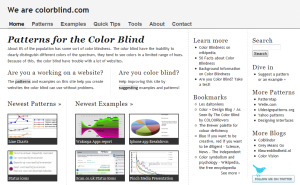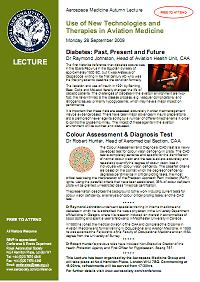Are you colorblind? No, you don’t think so? — I am sure you also have some form of color vision deficiency or colorblind sensations. You don’t believe me? I’ll prove it in the following article.
I would like to show you four types of color blindness which are true for almost all of us. Starting with a very simple form we will definitely get into more details when it comes to small-field tritanopia, which strongly supports my statement that everybody is colorblind.
(A) Colorblind in the Darkness
When it is getting dark at dusk colors start to fade. You start to mix up colors and are not so sure any more when it comes to naming a specific color. So one could say that everybody is colorblind in the darkness.
I know this is not such a strong argument to support my statement, but it is a very good example to get an impression of how it feels like if you would have some form of color vision deficiency.
(B) Ultraviolet and Infrared Blind
Non of us can see both far ends of our color spectrum: infrared and ultraviolet. We name those colors but we can’t see them. This doesn’t necessarily means we are colorblind if nobody can see them anyway. But there are creatures who can see those colors.
A lot of people heard that bees can see ultraviolet light; which is true. But they don’t have a broader color spectrum as they also have only three different color receptors like people with normal color vision. Bees see less reds and more blues, that’s not really better than us isn’t it.
But there are some fish, some turtles and the whole family of birds who can perceive our whole color spectrum and also ultraviolet light. Birds have four different color receptors (tetrachromats) and clearly can see more colors than you and me. On the other side we have for example rattlesnakes which have some form of infrared eyes which can see the prey at night.
(C) Tetrachromacy
If you believe it or not but not only animals are tetrachomats but also humans can have four different color receptors!
Studies have shown that women who carry the color vision defective gene, can develop four different receptors in the eye and therefore have a broader color spectrum than the rest of us. This is a very rarely diagnosed phenomenon but definitely makes all of us colorblind compared to tetrachomatic women.
(D) Small-Field Tritanopia
And if you think the three points above don’t really prove that we are all colorblind this last point will definitely change your mind.
Normal color vision means you have three different color receptors: one peeking at red (L-cones), one at green (M-cones) and one at blue (S-cones). Together we have about 4.5 million of those receptors distributed all over our retina. Most of them are L- and M-cones and only about 7% are blue sensitive.
A closer look at the distribution of the color receptors shows, that in the very center of the retina, inside the fovea, there are no blue cones at all! As this spot is very small—you can think of visual field the size of a tennis ball at the other side of the court—this is called small-field tritanopia. See also my article about tritanopia to learn more about this type of color vision deficiency.
So in the center of our visual field we have no S-cones. This means only L- and M-cones can give us information about the colors in that spot and therefore we are all dichromats in the fovea. — And why do you don’t know anything about your central color blindness? Because your eyes don’t really focus on such a little point but often move around. This makes you believe, that you have trichromatic color vision over your whole visual field.
And because small-field tritanopia is true for all of us, everybody is at least a little bit colorblind! quod erat demonstrandum.




 What are your choices to accomplish the FAA test for color vision—specially if this could be a problem for you as you know you don’t have perfect color vision? This article will show you the different possibilities you have to master this specific test on color vision deficiency.
What are your choices to accomplish the FAA test for color vision—specially if this could be a problem for you as you know you don’t have perfect color vision? This article will show you the different possibilities you have to master this specific test on color vision deficiency.
